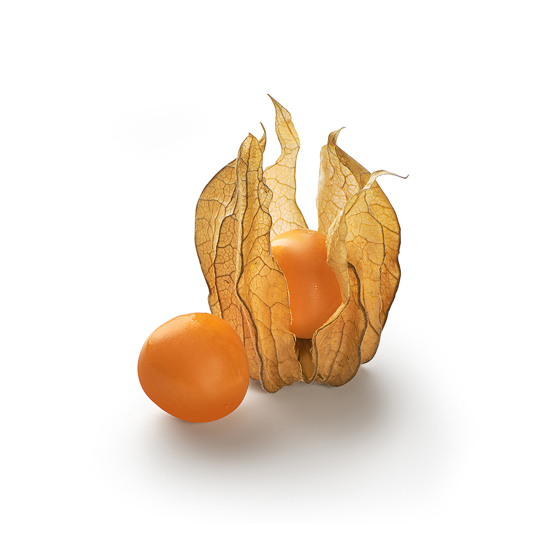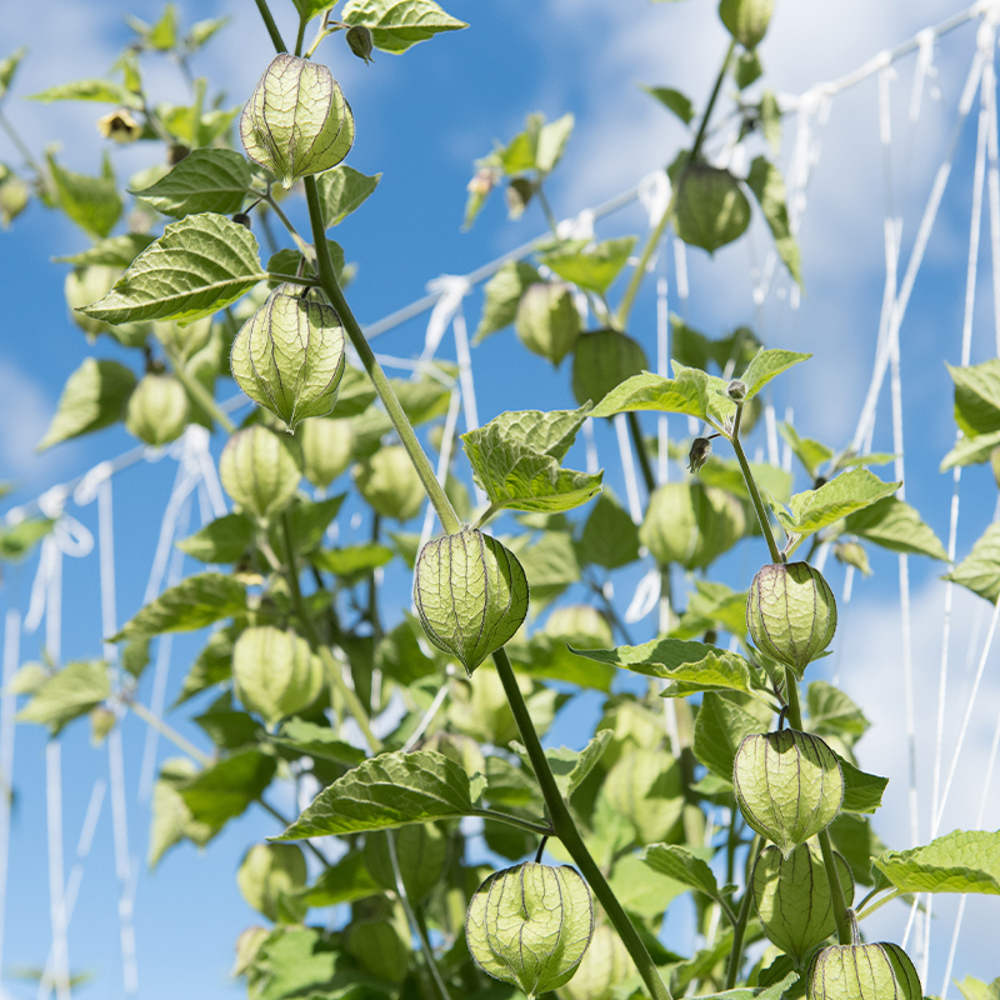Storage advice
You can store physalis, but the berries prefer to be kept outside the fridge.
Small in size, big in taste

The physalis is not much larger than 1-2 centimetres. But all the best things come in small packages - including taste. The flavour of this small round berry might remind you of pineapple, with a hint of acidity. The fruits are ripe when they colour orange-yellow. The seeds inside are edible.
The distinctive feature of the physalis is its appearance. The berry is wrapped in a translucent, papery husk.
With its striking colour and appealing size, the EAT ME physalis is an ideal garnish. It's an easy fruit to thread onto a cocktail stick. And a real eye-catcher in a bowl of assorted fruit. But why not try an adventurous combination? Focaccia and physalis might seem an unusual match… until you taste it!
Simply remove the papery husk and rinse the berry before consumption. And then you can cook and experiment to your heart's delight: in the pan, the oven, a salad or – what usually happens – eaten as it is.


You can store physalis, but the berries prefer to be kept outside the fridge.
Work on your vitamin C content with the physalis! The fruit is rich in that important vitamin. Why C is so important? For example, it boosts your resistance to physical exertion. Your resistance also improves in a cold environment. And it is generally known that vitamin C has a positive effect on your immune system.
EAT ME sources the fruits in Colombia. Central and South America offer the optimal climate for growth. The warmer it is, the better the fruit grows. And they certainly know how to grow. The physalis only takes 8 months to grow from a seed into a mature plant. And, what's exceptional is that growers can harvest the berries all year round for a maximum of 2 years.
As the plant grows, the beautiful papery husk develops around the berries. The husk acts as a natural protection and gives the berry a longer shelf life. The husks are dried in the packing stations using air circulation.
